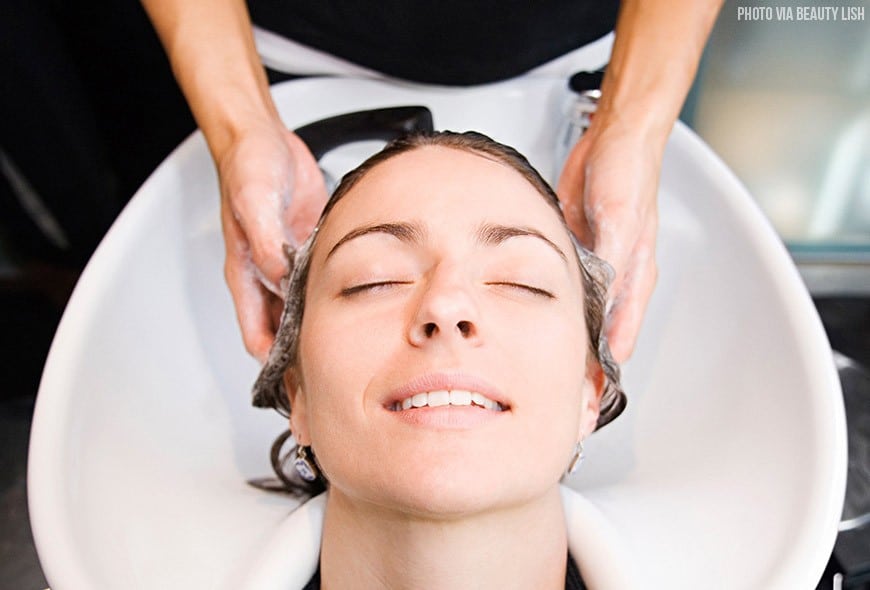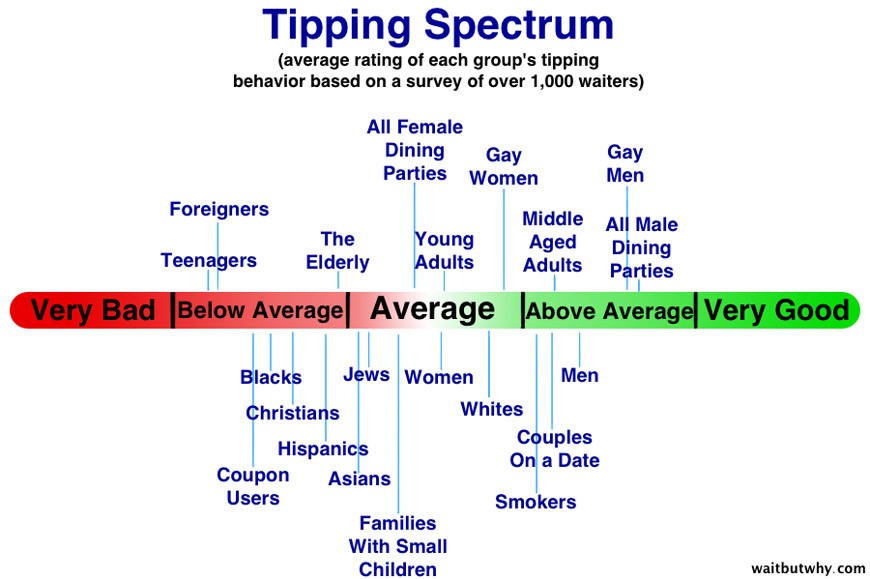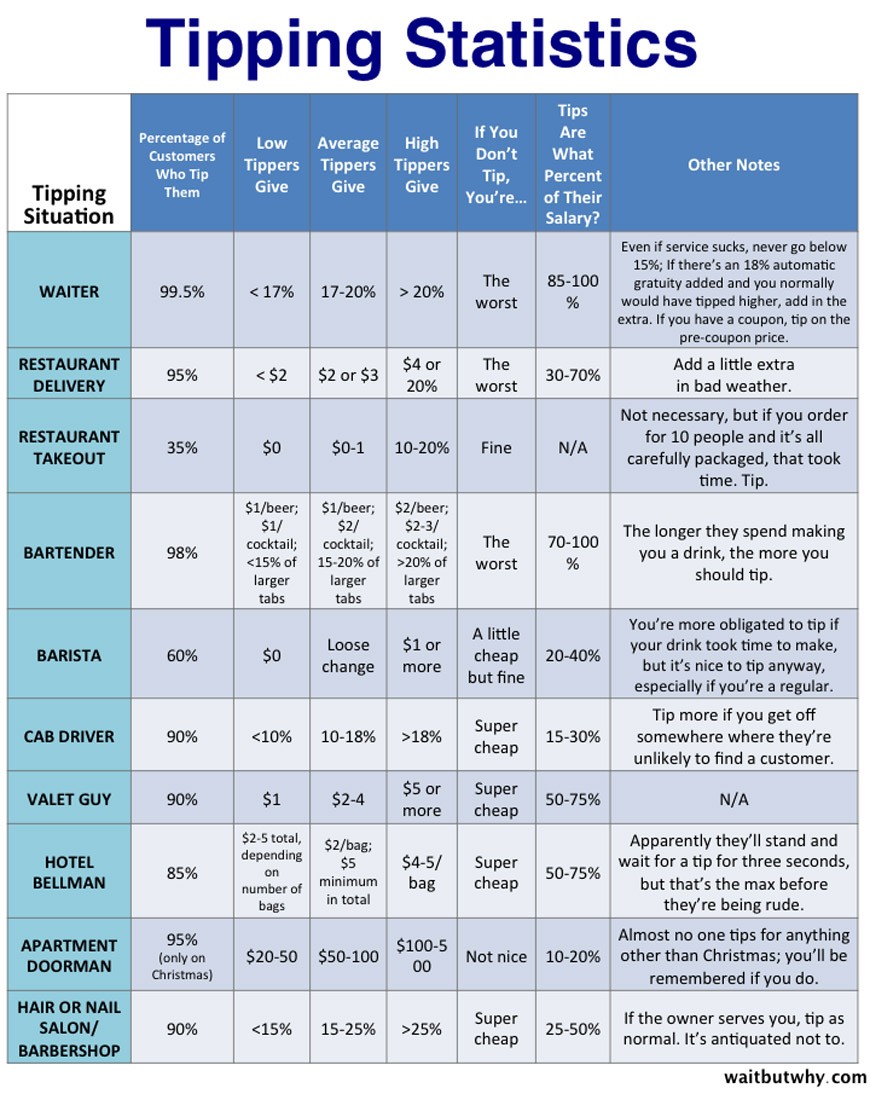Money is defined as what you earn, invest, or use to pay for things. The latter use can be a touchy subject, especially in regards to modern tipping culture. It’s only common courtesy to reward someone for their service, right? Then why has the concept of “appropriately” tipping our wait-staff, local merchant, or attendant become so skewed and maligned for some people. The exact percentage of what we tip may have changed a bit over the years, but the basic sentiments behind tipping remain the same.
What Is Considered An Appropriate Tip?
For most tipping scenarios there is a set baseline already in place. That’s usually a good place to start when tabulating the tip and it’s what is already generally deemed appropriate. However each unique tipping situation requires a different sum of money. When tipping a server at a restaurant the standard is about 17 to 20 percent of the total bill. For exceptional service you may tip 20 to 30 percent. Also keep in mind that the extra money is likely getting distributed among the bussers and host/hostess as well as the other servers. In some cases an 18 to 20 percent tip is already factored into the bill. Be sure to check your bill to see if that is the case.
Tips for personal food delivery are along those same lines, maybe a little less depending on the size of the order. But once the price gets beyond the $15 range, the standard shifts to the usual 20 percent.
In tipping culture it’s also important to reward services that don’t immediately come to mind. One of these is furniture movers. A good number of people don’t tip them at all, but a few dollars at the end of the job is always appreciated. According to American Moving and Storage Association spokesman John Bisney, a reasonable tip is about 5 percent of the total cost of the moving service. Bisney also states that other factors such as the quality and efficiency of the move also come into play.
The person handling your hair also deserves a little special something. When tipping a barber or hairdresser you should tip around 15 to 20 percent. If they listen carefully, spend an adequate amount time on you, and give you that fresh cut that you have always wanted, a little more money is more than acceptable and probably expected.
Tipping your bartender is all part of the bar-going experience. In most bars/taverns expect to tip $1 per beer and $2 for mixed drinks or 20 percent of the total. Mixed drinks tend to call for a higher tip because of the time and effort required to make them. A good rule of thumb is the longer they spend making your drink the higher the tip. It’s also considered rude and poor form to leave change at a bar. Lee Breslouer of Thrillist, weighs in from his experience, “We hate when people give us quarters. If someone’s gonna put 50 cents at the bar, I smirk and won’t take it. If you’re gonna make an effort, give me a dollar.”
Tipping for hotel services is broken up into several pieces. For valets it is $2 to $5 (tip higher during bad weather). Generally tip $1 to $4 to a doorman and a wide range of $5 to $20 for concierge assistance. Regarding room service, it is usually around 15 percent of the total bill. Housekeeping should receive $2 to $5 per night depending on the extent of the clean-up operation, the messier you leave the room the higher the tip should be. It’s also important to note that your cleaning person may change on a nightly basis, so it is important to leave a tip daily rather than one big cluster at the end.
Why Do We Tip?
Aside from tipping culture being a part of the American status quo, we tip because we feel compassion for our common man/woman. The word compassion literally means “to suffer together.” That has a rather morbid connotation, but there is a lot of truth in it. To a certain extent we are all in this life together and as a part of that we have to show one another care and respect. The amount we tip is a reflection of those feelings, it’s a nice non-verbal thank you in addition to an audible one. And being compassionate just feels good, it activates pleasure circuits in the brain. It is also proven that employees who receive more compassion in their workplace see everything in a more positive light and are more actively committed to their jobs.
On the other side of the coin (pun intended), Cornell professor Michael Lynn states “the major reason people tip is to avoid social disapproval.” They also recognize that they may be in a better position than the attendant and tip accordingly. It’s also been noted that people are more likely to tip better on sunny days. So even the weather play a role.
When is it okay to go against tipping culture?
If the service is really bad, then make it known. First, talk to your server and find out the reason for the poor the service. If that doesn’t work, then approach the manager and see if they can help. In this type of situation, it would still be inappropriate to leave nothing, so a 10 percent tip would be sufficient and would project your desired message. It’s important again to remember the big picture, and that the tip isn’t only going to your server/attendant. Most servers also pretty much live on tips and work for a low hourly rate. In regards to that faithful tip jar that often appears next to cash registers, the choice is yours.
Tipping Culture is simply a part of American life. It’s what we do to show our appreciation for the services that we are given. If you are low-tipper you may develop a reputation as a stingy person, but only change your ways if it feels right to you. Remember your meal ends with the tip, not just the bill.
For more tipping statistics, check out Wait But Why.com.



